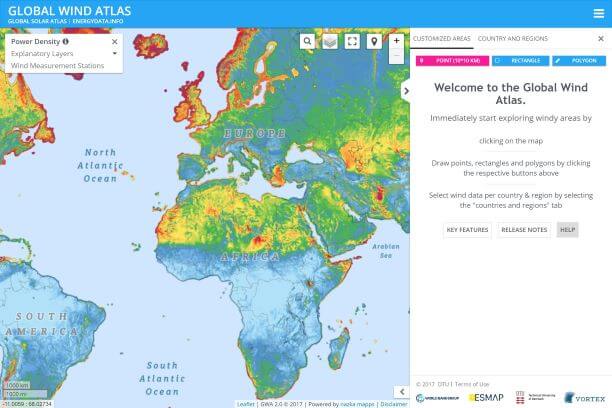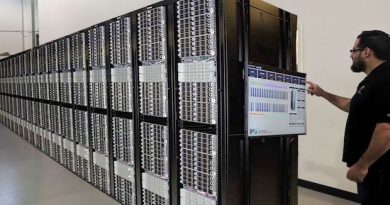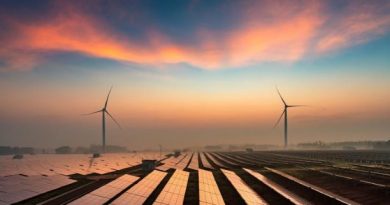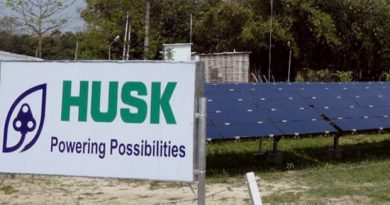World Bank’s Free Wind Atlas- a fillip to Renewable Energy Projects
 For a whiff of fresh air
For a whiff of fresh air
The New Global Wind Atlas (GWA 2.0), is the product of a partnership between World Bank (consisting of The World Bank and the International Finance Corporation, or IFC) and the Technical University of Denmark (DTU), will provide the most detailed data and statistics on global wind energy potential available – for free. The New GWA is scheduled to be launched in November. The World Bank Energy added that the initiative will facilitate the scale-up of wind resource development around the world.
The GWA 1.0 currently displays wind resource data at one-kilometre resolution. Prior to this release, wind data was only publicly available at 10-kilometre resolution or poorer, resulting in underestimations, increased risk and costs to wind energy planners. The microscale modeling in GWA 2.0 has been performed on the mesoscale outputs provided by Vortex, using the DTU Wind Energy methodology. The platform provides visual maps showing wind speeds at three different heights, and also includes tools to generate and export data and statistics such as wind rises and wind speed distributions over a chosen area.
Key Features:
- Global coverage, offshore coverage up to 30 km from the shoreline
- Wind resource mapping at 50, 100 and 200 m a.g.l. and 250 m high resolution
- User can assess the wind resource at a point, in a custom area, or within a country or region and can download posters and GIS data.
- Free access to the latest data and methodologies
- Map generation tool provides on-the-fly generation of customized maps in PDF format
- Regular updates: Major improvements and upgrades planned to the data and the tools available
As many countries look toward incorporating renewables into their energy mix, they seek reliable renewable energy data. In planning wind farms, for example, developers naturally pick areas with the highest wind speeds. In datasets that provide average wind speeds over large areas, the enhancement of wind speeds due to small-scale features such as hills and ridges are not captured and are underestimated, making the prospective area appear weaker than it actually is.
The Wind Atlas or GWA 1.0 was an IRENA and DTU collaborative effort, it was built on decades of wind mapping at DTU. Funded by Denmark as part of its commitment to the Clean Energy Ministerial (CEM) process, and represents the CEM’s Multilateral Solar and Wind Working Group to help increase the global share of renewable energy by providing the world with detailed and validated wind potentials through an online platform.
The Tool is also important for countries who may not have the acreage required for the solar farms (Read Japan) or Mountainous Countries where terrain may not allow Large scale hydropower plants. Such areas, often near Artic circle at 66.5°N, receive less sunshine due to sun’s angel but come in the paths of global Jet streams. Now this belt has majority of European and Eurasian countries as well as North American countries, who make up for the majority of the developed world and are also big greenhouse gas emitters.
To meet the Nationally Determined Contributions (NDCs) which are a cornerstone of the Paris Agreement on climate change, countries often take long duration research or study to collect data for installing such wind farms, often expensive and time consuming. And time is no more a luxury Earth can afford.
The Free Wind Atlas helps government save millions of dollars on research & shift to more sustainable forms of Renewable energy – an increasingly recognised key climate solution, which is connected to the NDCs arising from the 2015 Paris agreement. Of the 194 Parties to the United Nations Framework Convention on Climate Change (UNFCCC) that submitted NDCs, 145 referred to renewables as a way to mitigate climate change, while 109 cited specific renewable energy targets. Countries have the opportunity, however, to significantly strengthen their targets for renewables in the next round of NDCs.

Over USD 1.7 trillion would be needed by 2030 to implement renewable energy targets contained in NDCs worldwide. At least 1.3 terawatts (TW) of renewable power capacity would be added globally by 2030 as a result of NDC implementation, amounting to a 76% increase.
However, such growth expectations lag behind actual trends, as well as falling short of the ambitions expressed in national energy plans. Hence, such tools add to the cost-effective potential for renewables, meanwhile, is much higher than what is captured in current NDCs.
Read: Climate Economy Study predicts $26 trillion benefits from greener path
Rapid deployment of renewables, coupled with energy efficiency, could achieve around 90% of the emission reductions in the energy sector needed by 2050, while at the same time advancing economic growth and development.




